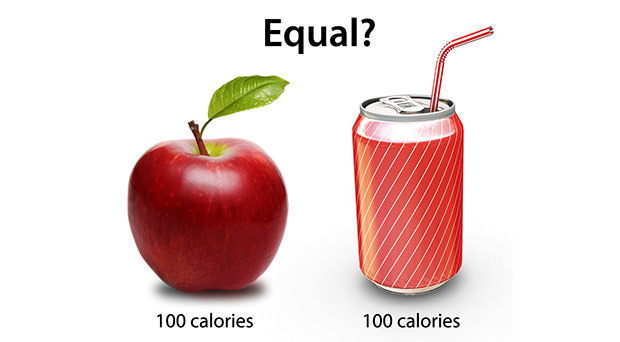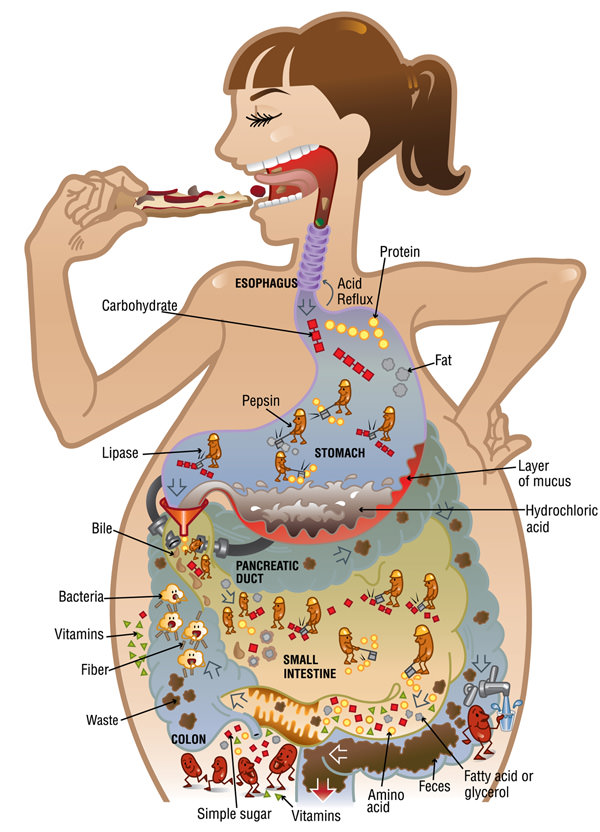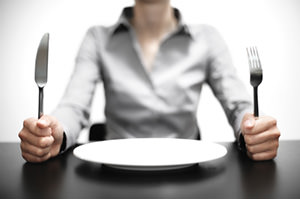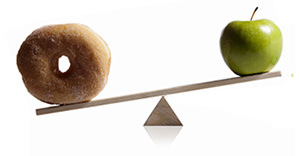
Why A Calorie Is Not A Calorie

Posted on 30 Oct, 2022

There are many ridiculous myths in nutrition. The “calorie myth” is one of the most pervasive… and most damaging. It is the idea that calories are the most important part of the diet, that the sources of those calories don’t matter.
 “A calorie is a calorie IS a calorie,” they say… that it doesn’t matter whether you eat a 1000 calories of candy or broccoli, they will have the same effect on your weight.
“A calorie is a calorie IS a calorie,” they say… that it doesn’t matter whether you eat a 1000 calories of candy or broccoli, they will have the same effect on your weight.
Newton’s first law of thermodynamics states that the energy of an isolated system is constant. In other words, in a laboratory, or “isolated system,” 1,000 calories of broccoli and 1,000 calories of soda are, in fact, the same. That when burned in a laboratory setting where one dietary calorie contains 4184 Joules of energy, both the broccoli and soda would indeed release the same amount of energy. In that respect, yes, a calorie IS a calorie.
But the law of thermodynamics doesn’t apply in living, breathing, digesting systems. When you eat food, the “isolated system” part of the equation goes out the window. The food interacts with your biology, a complex adaptive system that instantly transforms every bite.
Here are 6 proven examples of why a calorie is NOT a calorie.
1. Fructose vs Glucose

The two main simple sugars in the diet are glucose and fructose. These two seem almost identical. They have the same chemical formula and weigh the exact same. But to your body, the two are completely different.
Glucose can be metabolized by all of the body’s tissues, but fructose can only be metabolized by the liver in any significant amount.
Here are a few examples of why glucose calories are NOT the same as fructose calories:
- Ghrelin is the “hunger hormone.” It goes up when we’re hungry and down after we’ve eaten. Studies show that fructose leads to higher ghrelin levels (more hunger) than glucose.
- Fructose does not stimulate the satiety centers in the brain in the same way as glucose, leading to reduced satiety.
- A high consumption of fructose can cause insulin resistance, abdominal fat gain, increased triglycerides, blood sugar and small, dense LDL compared to the exact same number of calories from glucose.
Same number of calories, vastly different effects on hunger, hormones and metabolic health. Because a calorie is not a calorie.
Keep in mind that this applies to fructose from added sugars only, not the fructose from fruit. Fruits also have fiber, water and significant chewing resistance, which mitigate the negative effects of the fructose.
[Related: The 12 Best And Worst Sugar Substitutes]
2. The Thermic Effect of Food
When it comes to food, you have to put energy in to get energy out. Different foods require different amounts of energy to digest, absorb and metabolize the nutrients contained within them. This is called the thermic effect of food.
You have to put twice as much energy in to metabolize protein as you do carbohydrate.
There is also one study that compared two sandwich meals that had the same number of calories and macronutrients.However, one sandwich was made with whole grains and cheddar cheese, while the other was made with refined grains and processed cheese. Those who ate the whole grain sandwich burned twice as many calories digesting the meal.
[Related: Should You Be Eating Sprouted Bread?]

3. Protein Kills Appetite and Makes You Eat Fewer Calories
 The protein story doesn’t end with increased metabolism.It also leads to significantly reduced appetite, making you eat less calories automatically.
The protein story doesn’t end with increased metabolism.It also leads to significantly reduced appetite, making you eat less calories automatically.
The studies show that protein is the most fulfilling macronutrient, by far. If people increase their protein intake, they start losing weight without counting calories or controlling portions. Protein puts fat loss on autopilot.
In one study published in the American Journal of Clinical Nutrition, those who increased their protein intake to 30% of calories automatically started eating 441 fewer calories per day and lost 4.9 kg (11 lbs) in 12 weeks.
It is very clear that when it comes to metabolism and appetite regulation, a protein calorie is NOT the same as a carb calorie or a fat calorie.
[Related: Healthy Homemade Protein Bar Recipes]
4. The Satiety Index
 The satiety index is a measure of the ability of foods to reduce hunger, increase feelings of fullness and reduce energy intake for the next few hours. If you eat foods that are low on the satiety index, then you will be hungrier and end up eating more. If you choose foods that are high on the satiety index, you will end up eating less and losing weight.
The satiety index is a measure of the ability of foods to reduce hunger, increase feelings of fullness and reduce energy intake for the next few hours. If you eat foods that are low on the satiety index, then you will be hungrier and end up eating more. If you choose foods that are high on the satiety index, you will end up eating less and losing weight.
Some examples of foods with a high satiety index are boiled potatoes, beef, eggs, beans and fruits, while foods that are low on the satiety index include donuts and cake.
Clearly… whether you choose fulfilling foods or not will have a major difference on energy balance over the long term. Because a calorie from a boiled potato is not the same as a calorie from a doughnut.
[Related: The 12 Worst Foods For Appetite Control]
5. Low-Carb Diets Lead to Automatic Calorie Restriction
 Since the year 2002, over 20 randomized controlled trials have compared low-carb and low-fat diets.The studies consistently show that low-carb diets lead to more weight loss, often 2-3 times as much. One of the main reasons for this is that low-carb diets lead to drastically reduced appetite. People start eating less calories without trying.
Since the year 2002, over 20 randomized controlled trials have compared low-carb and low-fat diets.The studies consistently show that low-carb diets lead to more weight loss, often 2-3 times as much. One of the main reasons for this is that low-carb diets lead to drastically reduced appetite. People start eating less calories without trying.
6. The Glycemic Index
 There are many controversies in nutrition and the experts don’t agree on many things. But one of the few things that almost everyone agrees on is that refined carbs are bad. This includes added sugars like sucrose and high fructose corn syrup, as well as refined grain products like white bread.
There are many controversies in nutrition and the experts don’t agree on many things. But one of the few things that almost everyone agrees on is that refined carbs are bad. This includes added sugars like sucrose and high fructose corn syrup, as well as refined grain products like white bread.
Refined carbohydrates tend to be low in fiber and they get digested and absorbed quickly, leading to rapid spikes in blood sugar. They have a high glycemic index (GI), which is a measure of how quickly foods raise blood sugar.
When we eat a food that spikes blood sugar fast, it tends to lead to a crash in blood sugar a few hours later… also known as the “blood sugar roller coaster.” When blood sugar crashes, we get cravings for another high-carb snack.
So… the speed at which carb calories hit the system can have a dramatic effect on their potential to cause overeating and weight gain.
If you’re on high-carb diet, it is crucial to choose whole, unprocessed carb sources that contain fiber. The fiber can reduce the rate at which the glucose enters your system.
The studies consistently show that people who eat the most high glycemic index foods are at the greatest risk of becoming obese and diabetic. Because not all carb calories are created equal.
[Related: Different Types Of Fibre And Their Health Benefits]
Take Home Message
 Different calorie sources can have vastly different effects on hunger, hormones, energy expenditure and the brain regions that control food intake. Even though calories are important, counting them or even being consciously aware of them is not at all necessary to lose weight. In many cases, simple changes in food selection can lead to the same (or better) results than calorie restriction.
Different calorie sources can have vastly different effects on hunger, hormones, energy expenditure and the brain regions that control food intake. Even though calories are important, counting them or even being consciously aware of them is not at all necessary to lose weight. In many cases, simple changes in food selection can lead to the same (or better) results than calorie restriction.
Great Books On Maintaining A Healthy Body

by Cameron Diaz

by Deepak Chopra


 Diet Tips For Lazy People
Diet Tips For Lazy People Questions You Should Never Ask At A Farmers’ Market
Questions You Should Never Ask At A Farmers’ Market The 10 Toughest Endurance Challenges You Can Actually Do
The 10 Toughest Endurance Challenges You Can Actually Do The Best Workout for Bad Knees
The Best Workout for Bad Knees










